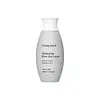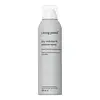What's inside
What's inside
 Key Ingredients
Key Ingredients

No key ingredients
 Benefits
Benefits

No benefits
 Concerns
Concerns

 Ingredients Side-by-side
Ingredients Side-by-side

Water
Skin ConditioningPolyalkylaminoester-1
Hydrolyzed Corn Starch
HumectantPvp
Emulsion StabilisingPolyacrylate-13
Sodium Citrate
BufferingPhospholipids
Skin ConditioningPentylene Glycol
Skin ConditioningPropylene Glycol Dibenzoate
Skin ConditioningFructose
HumectantSodium Hyaluronate
HumectantGlycerin
HumectantMaltodextrin/Vp Copolymer
Myristyl Alcohol
EmollientPolyporus Umbellatus Extract
Skin ProtectingAmaranthus Caudatus Seed Extract
Skin ConditioningPolysorbate 20
EmulsifyingXanthan Gum
EmulsifyingPolyisobutene
PPG-2 Myristyl Ether Propionate
EmollientOleth-10
EmulsifyingParfum
MaskingHydroxyacetophenone
AntioxidantEthylhexylglycerin
Skin ConditioningLinalool
PerfumingCitronellol
PerfumingLimonene
PerfumingCitral
PerfumingWater, Polyalkylaminoester-1, Hydrolyzed Corn Starch, Pvp, Polyacrylate-13, Sodium Citrate, Phospholipids, Pentylene Glycol, Propylene Glycol Dibenzoate, Fructose, Sodium Hyaluronate, Glycerin, Maltodextrin/Vp Copolymer, Myristyl Alcohol, Polyporus Umbellatus Extract, Amaranthus Caudatus Seed Extract, Polysorbate 20, Xanthan Gum, Polyisobutene, PPG-2 Myristyl Ether Propionate, Oleth-10, Parfum, Hydroxyacetophenone, Ethylhexylglycerin, Linalool, Citronellol, Limonene, Citral
Hydrofluorocarbon 152a
Alcohol Denat.
AntimicrobialVp/Va Copolymer
Va/Crotonates/Vinyl Neodecanoate Copolymer
Calcium Sodium Borosilicate
Water
Skin ConditioningCyclodextrin
AbsorbentZeolite
AbsorbentParfum
MaskingEthylcellulose
Propylene Glycol Dibenzoate
Skin ConditioningAminomethyl Propanol
BufferingAmmonium Glycyrrhizate
MaskingLinalool
PerfumingCitronellol
PerfumingCitral
PerfumingLimonene
PerfumingEthyl Linalool
MaskingMethyldihydrojasmonate
MaskingLinalyl Acetate
MaskingDipropylene Glycol
HumectantAmyl Salicylate
PerfumingPentadecalactone
MaskingTetramethyl Acetyloctahydronaphthalenes
MaskingIonone
AstringentCyclamen Aldehyde
MaskingHydrofluorocarbon 152a, Alcohol Denat., Vp/Va Copolymer, Va/Crotonates/Vinyl Neodecanoate Copolymer, Calcium Sodium Borosilicate, Water, Cyclodextrin, Zeolite, Parfum, Ethylcellulose, Propylene Glycol Dibenzoate, Aminomethyl Propanol, Ammonium Glycyrrhizate, Linalool, Citronellol, Citral, Limonene, Ethyl Linalool, Methyldihydrojasmonate, Linalyl Acetate, Dipropylene Glycol, Amyl Salicylate, Pentadecalactone, Tetramethyl Acetyloctahydronaphthalenes, Ionone, Cyclamen Aldehyde
 Reviews
Reviews

Ingredients Explained
These ingredients are found in both products.
Ingredients higher up in an ingredient list are typically present in a larger amount.
Citral is a fragrance and used to add a lemon-like scent to products. It is both naturally found in plants and created synthetically. In plants, it is commonly occurring in lemon myrtle, lemongrass, lemon tea-tree, lemon verbena, and other citruses.
The EU mandates Citral be listed separately as a fragrance. It is a known allergen and may cause contact dermatitis. Citral can also used as a masking ingredient.
The term 'fragrance' is not regulated in many countries. In many cases, it is up to the brand to define this term. For instance, many brands choose to label themselves as "fragrance-free" because they are not using synthetic fragrances. However, their products may still contain ingredients such as essential oils that are considered a fragrance.
The term 'citral' is a collective term for two geometric isomers: geranial/Citral A and neral/Citral B.
Learn more about CitralCitronellol is used to add fragrance/parfum to a product. It is often derived from plants such as roses. In fact, it can be found in many essential oils including geranium, lavender, neroli, and more. The scent of Citronellol is often described as "fresh, grassy, and citrus-like".
Since the Citronellol molecule is already unstable, Citronellol becomes irritating on the skin when exposed to air.
Citronellol is a modified terpene. Terpenes are unsaturated hydrocarbons found in plants. They make up the primary part of essential oils.
Citronellol is not able to be absorbed into deeper layers of the skin. It has low permeability,
Citronellol is also a natural insect repellent.
Learn more about CitronellolLimonene is a fragrance that adds scent and taste to a formulation.
It's found in the peel oil of citrus fruits and other plants such as lavender and eucalyptus. The scent of limonene is generally described as "sweet citrus".
Limonene acts as an antioxidant, meaning it helps neutralize free radicals.
When exposed to air, oxidized limonene may sensitize the skin. Because of this, limonene is often avoided by people with sensitive skin.
The term 'fragrance' is not regulated in many countries. In many cases, it is up to the brand to define this term. For instance, many brands choose to label themselves as "fragrance-free" because they are not using synthetic fragrances. However, their products may still contain ingredients such as essential oils that are considered a fragrance.
Learn more about LimoneneLinalool is a fragrance and helps add scent to products. It's derived from common plants such as cinnamon, mint, citrus, and lavender.
Like Limonene, this ingredient oxidizes when exposed to air. Oxidized linalool can cause allergies and skin sensitivity.
This ingredient has a scent that is floral, spicy tropical, and citrus-like.
Learn more about LinaloolParfum is a catch-all term for an ingredient or more that is used to give a scent to products.
Also called "fragrance", this ingredient can be a blend of hundreds of chemicals or plant oils. This means every product with "fragrance" or "parfum" in the ingredients list is a different mixture.
For instance, Habanolide is a proprietary trade name for a specific aroma chemical. When used as a fragrance ingredient in cosmetics, most aroma chemicals fall under the broad labeling category of “FRAGRANCE” or “PARFUM” according to EU and US regulations.
The term 'parfum' or 'fragrance' is not regulated in many countries. In many cases, it is up to the brand to define this term.
For instance, many brands choose to label themselves as "fragrance-free" because they are not using synthetic fragrances. However, their products may still contain ingredients such as essential oils that are considered a fragrance by INCI standards.
One example is Calendula flower extract. Calendula is an essential oil that still imparts a scent or 'fragrance'.
Depending on the blend, the ingredients in the mixture can cause allergies and sensitivities on the skin. Some ingredients that are known EU allergens include linalool and citronellol.
Parfum can also be used to mask or cover an unpleasant scent.
The bottom line is: not all fragrances/parfum/ingredients are created equally. If you are worried about fragrances, we recommend taking a closer look at an ingredient. And of course, we always recommend speaking with a professional.
Learn more about ParfumWe don't have a description for Propylene Glycol Dibenzoate yet.
Water. It's the most common cosmetic ingredient of all. You'll usually see it at the top of ingredient lists, meaning that it makes up the largest part of the product.
So why is it so popular? Water most often acts as a solvent - this means that it helps dissolve other ingredients into the formulation.
You'll also recognize water as that liquid we all need to stay alive. If you see this, drink a glass of water. Stay hydrated!
Learn more about Water